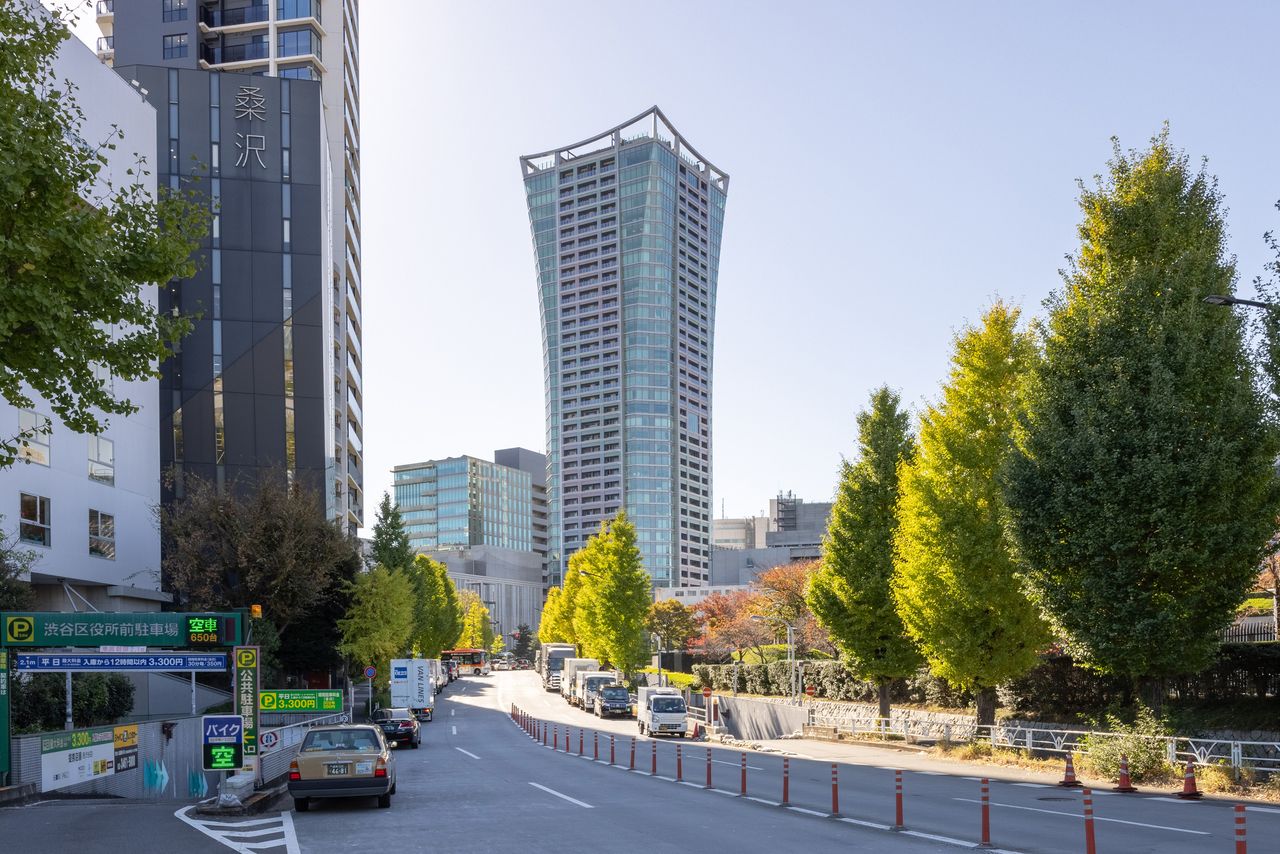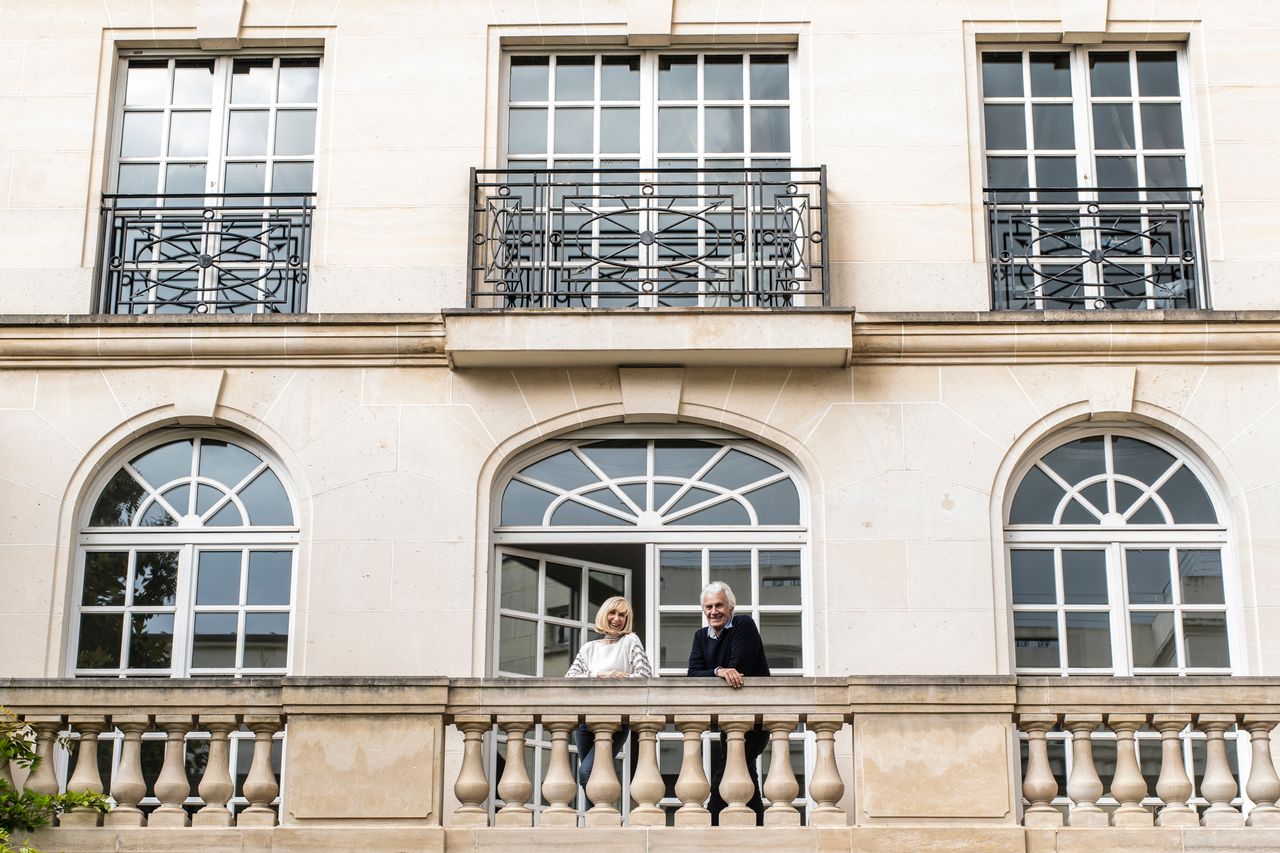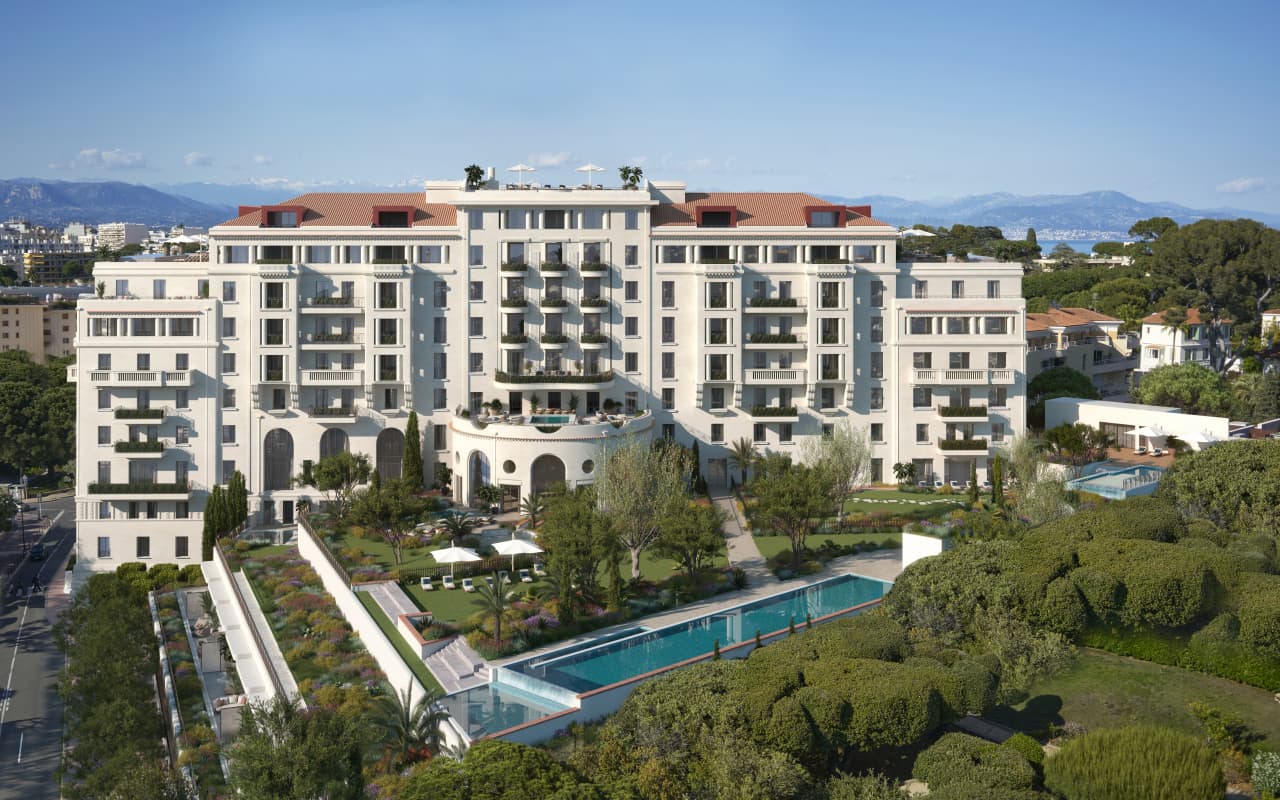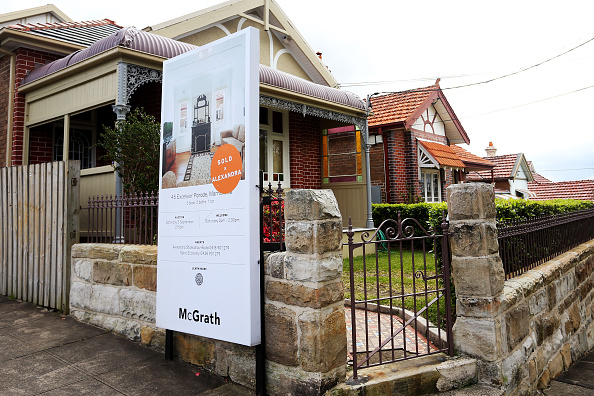Japan Long Looked Down at Luxury Penthouses. Now Things Are Looking Up.
Once considered an ostentatious display of wealth, extravagant top-floor spaces are suddenly in demand
Ken Akao, a 35-year-old cosmetic surgeon, was a little concerned when he bought a multimillion-dollar Tokyo apartment in October 2023. It wasn’t about the property itself, a three-bedroom, 39th- floor penthouse with a spiral staircase, Jacuzzi and infinity pool. It was about what his father, a frugal Japanese diplomat of the old school, would think after seeing a property so grand—and so un-Japanese.
After some time, Akao summoned the courage to invite his dad for a visit. To his relief, he says, the elder Akao enjoyed the tour and pronounced the pad “wonderful.”
A century after the Park Avenue penthouse became established as the height of residential luxury for New Yorkers, the concept has finally made it across the Pacific to Tokyo. Part of the credit goes to people with foreign experience such as the younger Akao, who grew up largely overseas, as well as the influence of Chinese buyers flooding into Japan these days.
It also reflects changing values about what constitutes the ideal property in Tokyo.
Japan’s capital first flourished in the 17th century as the seat of the shogun, or generalissimo, who reigned as Japan’s de facto ruler. The Tokugawa family of shoguns, having subjugated feudal lords across the land, insisted that the lords spend half their time in the capital. Soon the city then known as Edo was dotted with spacious compounds where grandees lived in sprawling low-slung wooden homes watched by the shogun’s spies.
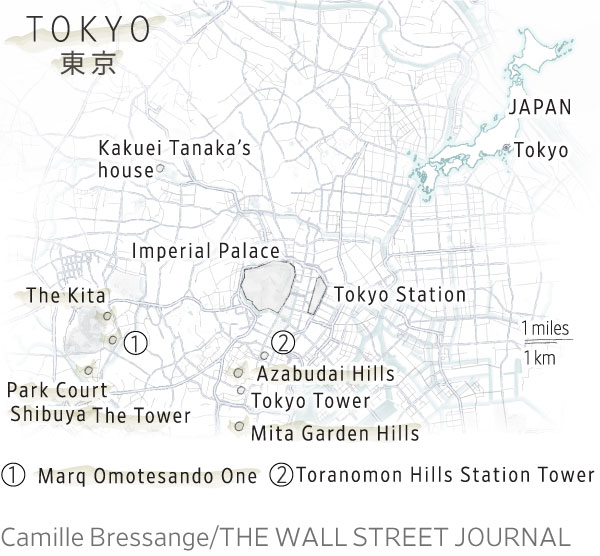
Long after Edo became Tokyo and feudalism ended in 1868, those properties served as the prototype for the rich. Kakuei Tanaka, a poor man from the provinces who got wealthy with business ventures while rising to become Japan’s prime minister between 1972 and 1974, used to hold court inside the walls of a leafy compound in the Mejiro area of Tokyo, where he could feed the carp in his pond. (The house was destroyed by fire on Jan. 8. No one was hurt.) In a country that tends to frown on ostentation and special treatment for the privileged, the high walls surrounding such properties offered privacy.
These days, most rich Japanese still prefer to keep their wealth under wraps. But other changes have made a luxury condominium in a prime central Tokyo location look attractive compared with a house on a spacious property in a residential area.
One is the burst of the land-price bubble in the early 1990s, which shattered the myth of land as an indestructible store of value. These days, say real-estate professionals, bankers are less inclined to insist on land as collateral and more willing to extend loans backed by quality condos that are seen as likely to retain value across economic cycles. Also, in an ageing country where labor is in short supply, many older couples look askance at trying to care for large grounds. “Weeding is such a pain for old people,” said Satoshi Omori, president of a Tokyo real-estate appraisal firm.
The 2011 earthquake in northeastern Japan boosted the appeal of living in an earthquake-resistant concrete building in a central location rather than a wooden house farther out, where services might be hard to come by in an emergency.
“Compact cities are a global trend and people tend to prefer places that are more convenient,” said Shigeru Funabashi, a Tokyo broker.
Funabashi is a cosmetic surgeon who has in recent years shifted his career toward real estate, having developed a fascination with luxury residences. In 2011, he went to London to take a look at One Hyde Park, which is the location of a penthouse that was recently one of the highest priced in the city. He recalls thinking to himself, “Something like this will come to Tokyo someday.”
Foreign developers were ahead of the game in tapping the wellspring of demand Funabashi sensed and spreading the word “penthouse” in the Japanese language. In the Shibuya district, popular among tourists, Canadian developer Westbank in 2020 completed a five-floor condominium designed by architect Kengo Kuma. Traditionally, such buildings had nothing fancier on the top floor than plumbing and electrical equipment. But Westbank put in a multilevel penthouse with a private infinity pool on the roof. It sold early last year for $50 million, according to the developer.
Some other buyers in the building bought two units to combine them. “It really showed us that there is this massive gap in the market for products at this level,” a Westbank representative in Japan said. She said that if Westbank had the chance to build the 12-unit property again, it would make it with only six units.
Marq Omotesando One is another luxury low-rise condominium by foreign developers in central Tokyo that was completed in 2021. The development, led by a unit of Hong Kong-based investment firm BPEA, features a 6,700-square-foot penthouse with roof pool that local agents said has been listed at a price in the tens of millions of dollars. Its current status couldn’t be determined.
At Japanese real-estate development companies, “no one really wanted to rock the boat or do anything different,” said Zoe Ward, a real-estate agent originally from Australia who has worked for 15 years in Japan’s property market. But they changed course after seeing foreign developers building extravagant properties and selling units at high prices never seen before, Ward said.
Japanese developers say that many customers of ultra expensive condos are locals, including corporate executives and younger entrepreneurs who are often familiar with high-end homes in places such as New York and London.
Azabudai Hills, a Mori Building project in central Tokyo that includes offices and apartments, opened on Nov. 24. The development includes what is currently the tallest building in Japan, with 91 Aman-branded apartments on high floors. Planning documents submitted to authorities show there are three duplex penthouse units on the 64th floor. The largest unit occupies half the floor and has a private pool, the documents indicate. Local brokers say all three have been sold.
Mori Building declined to release floor plans or price ranges for those apartments—a reminder that the rich here still don’t want their private business aired, even if their high-rise homes are visible dozens of miles away. A local publication, Daily Shincho, reported that the largest unit sold for the equivalent of $200 million, which would make it the highest-price condo ever sold in Japan by a multiple of two or three.
Swimming pools on rooftops are rare in Japan, partly because of concerns about water leaking during earthquakes. But that is also changing. A central Tokyo office-hotel building developed by Mori Building opened in October with restaurants and an infinity pool on the roof.
“The rooftop was never utilised in Japan as much as it should be,” said architect Shohei Shigematsu, who designed the building. He said his team added extra drainage to reassure the developer that water wouldn’t splash on passersby 49 floors below in the event of an earthquake.
More luxury penthouses are on the way, including several on the top floor of a 13-story building at Mita Garden Hills, a project jointly developed by units of Mitsui Fudosan and Mitsubishi Estate. The building won’t be completed until 2026, but Mitsui says all of the penthouses have been sold.
The most expensive one, with a floor area of about 4,000 square feet, sold for 5.5 billion yen, equivalent to about $38 million, according to a broker familiar with the deal. Mitsui declined to comment.
In Osaka, the centre of Japan’s second-largest urban area after the Tokyo region, a penthouse in a 46-storey building, due to be completed in December 2025, is listed for the equivalent of about $17 million. The price for the unit, which at 3,300 square feet is the building’s largest, would be the highest price ever for an Osaka-area condo, said a spokesman for Sekisui House, one of the developers.
The spokesman said the penthouse has the vibe of a European guesthouse for visiting dignitaries, with chandeliers hanging from ceilings that are as high as 16 feet. Some other units feature an elevator to carry the owner’s car into the premises.
While ultrahigh-price deals are usually not included in industry databases, prices of Tokyo apartments generally are rising, driven by the higher cost of materials and labor. The Real Estate Economic Institute, a Tokyo-based firm tracking the property market, said the average price of a new apartment sold in central Tokyo for the six months through September was up 36% compared with the same period a year earlier and topped 100 million yen, equivalent to about $700,000, for the first time.
Akao, the cosmetic surgeon and recently minted penthouse owner, says he grew fond of the luxury lifestyle when visiting Aman hotels in Japan and Greece. He wasn’t able to get his hands on one of the Aman units in Azabudai Hills, but found a good substitute in his penthouse across from Yoyogi Park, a central Tokyo urban oasis like New York’s Central Park.
There is an en-suite bathroom in the primary bedroom, rare for a Japanese home, and Miele appliances in the kitchen. The staircase from the living-dining area, which features sofas from Arflex Japan, leads to an open-air 700-square-foot deck with the infinity pool.
“I often have large group get-togethers,” Akao said. “The pool will make gatherings easier.”
Akao said that growing up in the U.S., Switzerland and Austria where his father was posted made him familiar with the lifestyle because some of his classmates lived in houses with a pool and talked about it casually at school.
While analysts say most of the recently built penthouses are bought by people who intend to live in them, there are still flippers. Akao might be one of them. He said he is trying to sell his unit before considering whether to move in. He declined to disclose what he paid but said he was asking the equivalent of about $9 million.
—Peter Landers contributed to this article.
 Copyright 2020, Dow Jones & Company, Inc. All Rights Reserved Worldwide. LEARN MORE
Copyright 2020, Dow Jones & Company, Inc. All Rights Reserved Worldwide. LEARN MORE
This stylish family home combines a classic palette and finishes with a flexible floorplan
Just 55 minutes from Sydney, make this your creative getaway located in the majestic Hawkesbury region.
Ahead of the Games, a breakdown of the city’s most desirable places to live
PARIS —Paris has long been a byword for luxurious living. The traditional components of the upscale home, from parquet floors to elaborate moldings, have their origins here. Yet settling down in just the right address in this low-rise, high-density city may be the greatest luxury of all.
Tradition reigns supreme in Paris real estate, where certain conditions seem set in stone—the western half of the city, on either side of the Seine, has long been more expensive than the east. But in the fashion world’s capital, parts of the housing market are also subject to shifting fads. In the trendy, hilly northeast, a roving cool factor can send prices in this year’s hip neighborhood rising, while last year’s might seem like a sudden bargain.
This week, with the opening of the Olympic Games and the eyes of the world turned toward Paris, The Wall Street Journal looks at the most expensive and desirable areas in the City of Light.
The Most Expensive Arrondissement: the 6th
Known for historic architecture, elegant apartment houses and bohemian street cred, the 6th Arrondissement is Paris’s answer to Manhattan’s West Village. Like its New York counterpart, the 6th’s starving-artist days are long behind it. But the charm that first wooed notable residents like Gertrude Stein and Jean-Paul Sartre is still largely intact, attracting high-minded tourists and deep-pocketed homeowners who can afford its once-edgy, now serene atmosphere.
Le Breton George V Notaires, a Paris notary with an international clientele, says the 6th consistently holds the title of most expensive arrondissement among Paris’s 20 administrative districts, and 2023 was no exception. Last year, average home prices reached $1,428 a square foot—almost 30% higher than the Paris average of $1,100 a square foot.
According to Meilleurs Agents, the Paris real estate appraisal company, the 6th is also home to three of the city’s five most expensive streets. Rue de Furstemberg, a secluded loop between Boulevard Saint-Germain and the Seine, comes in on top, with average prices of $2,454 a square foot as of March 2024.
For more than two decades, Kyle Branum, a 51-year-old attorney, and Kimberly Branum, a 60-year-old retired CEO, have been regular visitors to Paris, opting for apartment rentals and ultimately an ownership interest in an apartment in the city’s 7th Arrondissement, a sedate Left Bank district known for its discreet atmosphere and plutocratic residents.
“The 7th was the only place we stayed,” says Kimberly, “but we spent most of our time in the 6th.”
In 2022, inspired by the strength of the dollar, the Branums decided to fulfil a longstanding dream of buying in Paris. Working with Paris Property Group, they opted for a 1,465-square-foot, three-bedroom in a building dating to the 17th century on a side street in the 6th Arrondissement. They paid $2.7 million for the unit and then spent just over $1 million on the renovation, working with Franco-American visual artist Monte Laster, who also does interiors.
The couple, who live in Santa Barbara, Calif., plan to spend about three months a year in Paris, hosting children and grandchildren, and cooking after forays to local food markets. Their new kitchen, which includes a French stove from luxury appliance brand Lacanche, is Kimberly’s favourite room, she says.
Another American, investor Ashley Maddox, 49, is also considering relocating.
In 2012, the longtime Paris resident bought a dingy, overstuffed 1,765-square-foot apartment in the 6th and started from scratch. She paid $2.5 million and undertook a gut renovation and building improvements for about $800,000. A centrepiece of the home now is the one-time salon, which was turned into an open-plan kitchen and dining area where Maddox and her three children tend to hang out, American-style. Just outside her door are some of the city’s best-known bakeries and cheesemongers, and she is a short walk from the Jardin du Luxembourg, the Left Bank’s premier green space.
“A lot of the majesty of the city is accessible from here,” she says. “It’s so central, it’s bananas.” Now that two of her children are going away to school, she has listed the four-bedroom apartment with Varenne for $5 million.
The Most Expensive Neighbourhoods: Notre-Dame and Invalides
Garrow Kedigian is moving up in the world of Parisian real estate by heading south of the Seine.
During the pandemic, the Canada-born, New York-based interior designer reassessed his life, he says, and decided “I’m not going to wait any longer to have a pied-à-terre in Paris.”
He originally selected a 1,130-square-foot one-bedroom in the trendy 9th Arrondissement, an up-and-coming Right Bank district just below Montmartre. But he soon realised it was too small for his extended stays, not to mention hosting guests from out of town.
After paying about $1.6 million in 2022 and then investing about $55,000 in new decor, he put the unit up for sale in early 2024 and went house-shopping a second time. He ended up in the Invalides quarter of the 7th Arrondissement in the shadow of one Paris’s signature monuments, the golden-domed Hôtel des Invalides, which dates to the 17th century and is fronted by a grand esplanade.
His new neighbourhood vies for Paris’s most expensive with the Notre-Dame quarter in the 4th Arrondissement, centred on a few islands in the Seine behind its namesake cathedral. According to Le Breton, home prices in the Notre-Dame neighbourhood were $1,818 a square foot in 2023, followed by $1,568 a square foot in Invalides.
After breaking even on his Right Bank one-bedroom, Kedigian paid $2.4 million for his new 1,450-square-foot two-bedroom in a late 19th-century building. It has southern exposures, rounded living-room windows and “gorgeous floors,” he says. Kedigian, who bought the new flat through Junot Fine Properties/Knight Frank, plans to spend up to $435,000 on a renovation that will involve restoring the original 12-foot ceiling height in many of the rooms, as well as rescuing the ceilings’ elaborate stucco detailing. He expects to finish in 2025.
Over in the Notre-Dame neighbourhood, Belles demeures de France/Christie’s recently sold a 2,370-square-foot, four-bedroom home for close to the asking price of about $8.6 million, or about $3,630 a square foot. Listing agent Marie-Hélène Lundgreen says this places the unit near the very top of Paris luxury real estate, where prime homes typically sell between $2,530 and $4,040 a square foot.
The Most Expensive Suburb: Neuilly-sur-Seine
The Boulevard Périphérique, the 22-mile ring road that surrounds Paris and its 20 arrondissements, was once a line in the sand for Parisians, who regarded the French capital’s numerous suburbs as something to drive through on their way to and from vacation. The past few decades have seen waves of gentrification beyond the city’s borders, upgrading humble or industrial districts to the north and east into prime residential areas. And it has turned Neuilly-sur-Seine, just northwest of the city, into a luxury compound of first resort.
In 2023, Neuilly’s average home price of $1,092 a square foot made the leafy, stately community Paris’s most expensive suburb.
Longtime residents, Alain and Michèle Bigio, decided this year is the right time to list their 7,730-square-foot, four-bedroom townhouse on a gated Neuilly street.
The couple, now in their mid 70s, completed the home in 1990, two years after they purchased a small parcel of garden from the owners next door for an undisclosed amount. Having relocated from a white-marble château outside Paris, the couple echoed their previous home by using white- and cream-coloured stone in the new four-story build. The Bigios, who will relocate just back over the border in the 16th Arrondissement, have listed the property with Emile Garcin Propriétés for $14.7 million.
The couple raised two adult children here and undertook upgrades in their empty-nester years—most recently, an indoor pool in the basement and a new elevator.
The cool, pale interiors give way to dark and sardonic images in the former staff’s quarters in the basement where Alain works on his hobby—surreal and satirical paintings, whose risqué content means that his wife prefers they stay downstairs. “I’m not a painter,” he says. “But I paint.”
The Trendiest Arrondissement: the 9th
French interior designer Julie Hamon is theatre royalty. Her grandfather was playwright Jean Anouilh, a giant of 20th-century French literature, and her sister is actress Gwendoline Hamon. The 52-year-old, who divides her time between Paris and the U.K., still remembers when the city’s 9th Arrondissement, where she and her husband bought their 1,885-square-foot duplex in 2017, was a place to have fun rather than put down roots. Now, the 9th is the place to do both.
The 9th, a largely 19th-century district, is Paris at its most urban. But what it lacks in parks and other green spaces, it makes up with nightlife and a bustling street life. Among Paris’s gentrifying districts, which have been transformed since 2000 from near-slums to the brink of luxury, the 9th has emerged as the clear winner. According to Le Breton, average 2023 home prices here were $1,062 a square foot, while its nearest competitors for the cool crown, the 10th and the 11th, have yet to break $1,011 a square foot.
A co-principal in the Bobo Design Studio, Hamon—whose gut renovation includes a dramatic skylight, a home cinema and air conditioning—still seems surprised at how far her arrondissement has come. “The 9th used to be well known for all the theatres, nightclubs and strip clubs,” she says. “But it was never a place where you wanted to live—now it’s the place to be.”
With their youngest child about to go to college, she and her husband, 52-year-old entrepreneur Guillaume Clignet, decided to list their Paris home for $3.45 million and live in London full-time. Propriétés Parisiennes/Sotheby’s is handling the listing, which has just gone into contract after about six months on the market.
The 9th’s music venues were a draw for 44-year-old American musician and piano dealer, Ronen Segev, who divides his time between Miami and a 1,725-square-foot, two-bedroom in the lower reaches of the arrondissement. Aided by Paris Property Group, Segev purchased the apartment at auction during the pandemic, sight unseen, for $1.69 million. He spent $270,000 on a renovation, knocking down a wall to make a larger salon suitable for home concerts.
During the Olympics, Segev is renting out the space for about $22,850 a week to attendees of the Games. Otherwise, he prefers longer-term sublets to visiting musicians for $32,700 a month.
Most Exclusive Address: Avenue Junot
Hidden in the hilly expanses of the 18th Arrondissement lies a legendary street that, for those in the know, is the city’s most exclusive address. Avenue Junot, a bucolic tree-lined lane, is a fairy-tale version of the city, separate from the gritty bustle that surrounds it.
Homes here rarely come up for sale, and, when they do, they tend to be off-market, or sold before they can be listed. Martine Kuperfis—whose Paris-based Junot Group real-estate company is named for the street—says the most expensive units here are penthouses with views over the whole of the city.
In 2021, her agency sold a 3,230-square-foot triplex apartment, with a 1,400-square-foot terrace, for $8.5 million. At about $2,630 a square foot, that is three times the current average price in the whole of the 18th.
Among its current Junot listings is a 1930s 1,220-square-foot townhouse on the avenue’s cobblestone extension, with an asking price of $2.8 million.
This stylish family home combines a classic palette and finishes with a flexible floorplan
Just 55 minutes from Sydney, make this your creative getaway located in the majestic Hawkesbury region.









